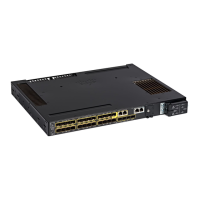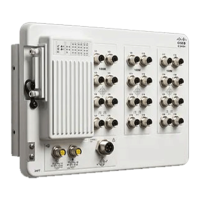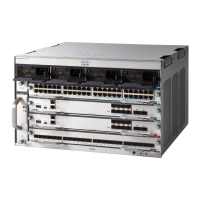• The LED turns amber while the STP discovers the network topology and searches for loops. This process takes
about 30 seconds, and then the port LED turns green.
• If the LED is off, the target device might not be turned on, there might be a cable problem, or there might be a
problem with the adapter installed in the target device. See Troubleshooting for solutions to cabling problems.
Step 5 If necessary, reconfigure and restart the switch or the target device.
Connect to a 1000BASE-T SFP Module
Connect a CAT5 or later cable to a 1000BASE-T SFP module.
Caution: To prevent ESD damage, follow standard board and component handling procedures.
Caution
Before you begin
Read and understand the section Guidance for Connecting to SFP Modules, on page 33.
Step 1 When connecting to servers, workstations, and routers, insert a four twisted-pair, straight-through cable in the RJ-45
connector. When connecting to switches or repeaters, insert a four twisted-pair, crossover cable.
When connecting to a 1000BASE-T device, use a four twisted-pair CAT5 cable.
Step 2 Insert the other cable end in an RJ-45 connector on a target device.
Step 3 Observe the port status LED.
• The LED turns green when the switch and the target device have an established link.
• The LED turns amber while the STP discovers the network topology and searches for loops. This process takes
about 30 seconds, and then the port LED turns green.
• If the LED is off, the target device might not be turned on, there might be a cable problem, or there might be problem
with the adapter installed in the target device. See Troubleshooting for solutions to cabling problems.
Step 4 If necessary, reconfigure and restart the switch or target device.
What to do next
Remove SFP Modules
Remove an SFP module.
Step 1 Attach an ESD-preventive wrist strap to your wrist and to a bare metal surface.
Step 2 Disconnect the cable from the SFP module.
Cisco Catalyst IE9300 Rugged Series Switch Hardware Installation Guide
34
Switch Installation
Connect to a 1000BASE-T SFP Module

